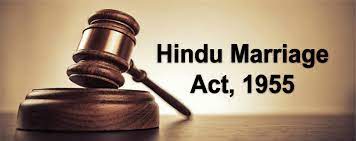
Some facts about Family Law: The Hindu Marriage Act, 1955

Section 2of the Hindu Marriage Act 1955 states that this act applies to any person who is a Hindu by birth or who has changed his/her religion to either any of its forms such as Virashaiva, a Lingayat, or a follower of the Brahmo, Prarthana or Arya Samaj. Any person who is a Buddhist, Jain, or Sikh also comes under this act.
Section 5 of the Act lists down the essential elements for a valid Hindu Marriage, viz, should practice monogamy, should not practice bigamy, should have a sound mind at the time of marriage, should be of marriageable age, should avoid Sapinda relationship.
Section 7 of the Hindu marriage act 1955 states the solemnization of the Hindu marriage, a Hindu marriage may be performed by all the ceremonies and rituals of both the party or either anyone. It is concerned with the Saptapadi which means taking seven rounds around the fire with their partner; after its completion marriage becomes complete and binding.
Section 12 of the Hindu Marriage Act 1955 lays down that when one’s consent is not obtained, the marriage is considered void. It shows that despite the absence of consent of the bride, the marriage is valid and legal.
What is the significance of the Hindu Marriage Act, 1955?
The Hindu Marriage Act 1955 provides guidance for Hindus to be in a systematic marriage bond.
It gives meaning to marriage, cohabiting rights for both the bride and groom, and a safety for their family and children so that they do not suffer from their parental issues.
This enactment brought uniformity of law for all sections of Hindus.








